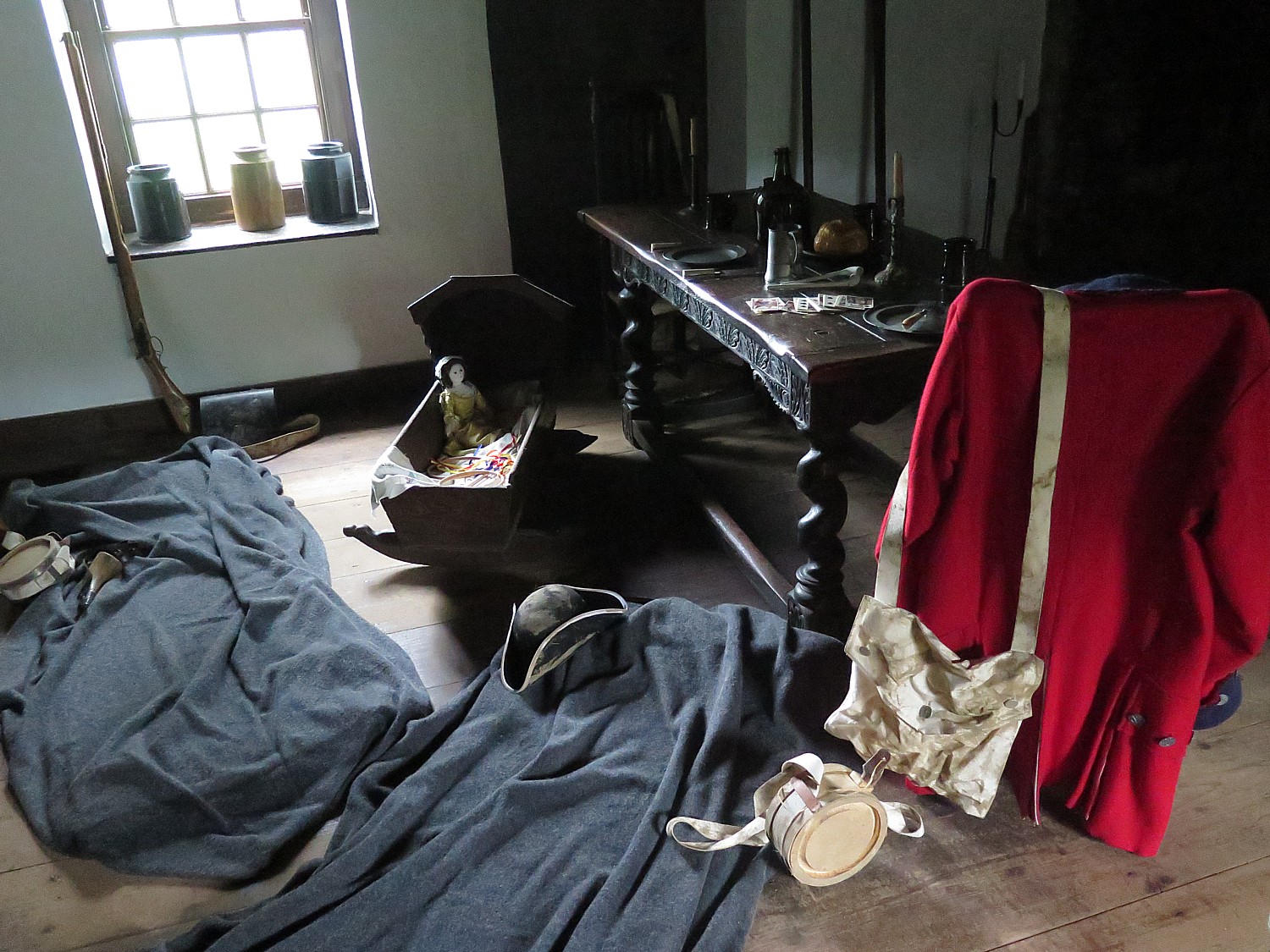
by Karen Rubin
Travel Features Syndicate, goingplacesfarandnear.com
Being here at Washington Crossing State Park on the Pennsylvania shore of the Delaware River, hearing the story of General George Washington crossing icy water on that fateful Christmas night, I realize that all I knew of that scene was the image from the painting so indelibly impressed on every school child’s brain. The actual events are much, much more dramatic, as the 300 Sojourners, cyclists who have come down the Delaware-Lehigh Trail, learn on our guided tour.
This opportunity to tour Washington Crossing Historical Park is built into the Rails-to-Trails Conservancy Sojourn, one of several options for our layover day on the fourth day of the five-day biking-and-camping trip.
The Sojourn rides- usually five or six days of supported camping and biking – are typically constructed with a layover day where you get to choose from activities and excursions that exemplify the area or just hang out on your own. Other options include a kayak tour on the Delaware Canal; a visit to the Bowman’s Hill Wildflower Preserve, a tour of the Old Barracks Museum in Trenton, NJ, or just exploring New Hope, PA on our own to take in attractions, dining and art galleries.
I have opted to join the historical tour of both the Upper Park and Lower Park of Washington Crossing Historical Park, Bowman’s Hill Tower, Thompson-Neely House, Soldiers’ Graves, the Village and the Visitor’s Center.
I realize I had no clue of just how heroic, indeed, how much of a Mission Impossible this feat was, and how many were involved, nor how significant this relatively small battle of was for the ultimate success of the revolution that founded our nation.
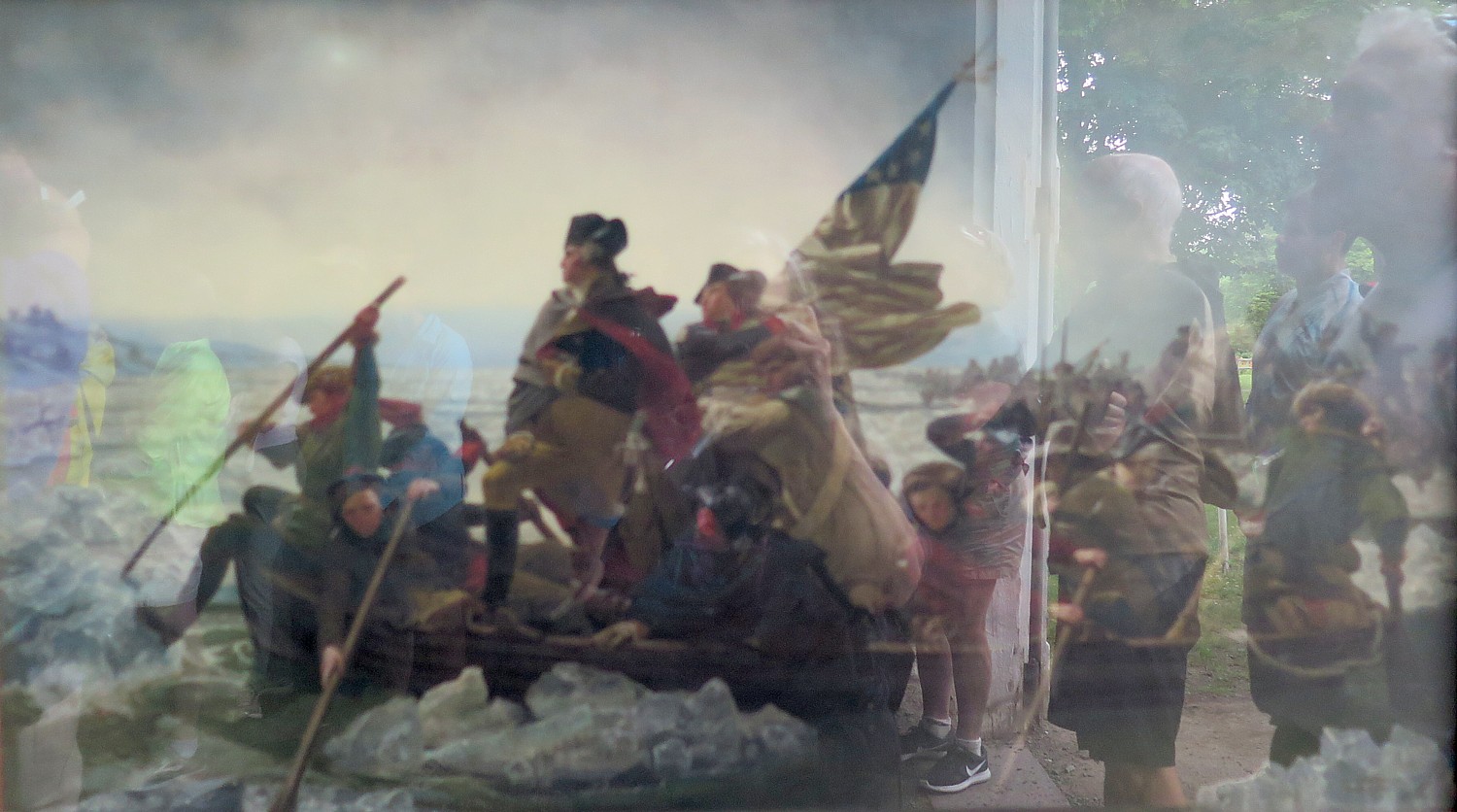
The visit to the Washington Crossing Historical Park starts with an excellent 14-minute video introduction that lays out why Washington said of this desperate mission ““Dire necessity will, nay must, justify the attack.”
It was winter of 1776. The Continental Army had suffered terrible defeats on Long Island and New York. Washington was forced to retreat across New Jersey to Pennsylvania on December 7 and 8.
The British were on the march to Philadelphia, plundering and ravishing homesteads as they went. They were waiting for the Delaware River to freeze so they could march across. That gave Washington some time to regroup.
Morale of the American troops was low. The soldiers lacked food and warm clothing, even boots. Washington watched his army shrink due to desertions and expiring enlistments. Now, more than ever, a victory was desperately needed.
Washington hatched a daring plan to cross the Delaware River under the cover of darkness, march to Trenton and unleash a surprise attack on the Hessian outposts in and around Trenton.
He ordered every boat that could be found to be at the ready. Among the various types of boats gathered, most notable were the large, heavy Durham boats that were used to carry pig iron down the Delaware.
His plan was for a Pincer-style attack, with two divisions attacking from the south of Trenton.
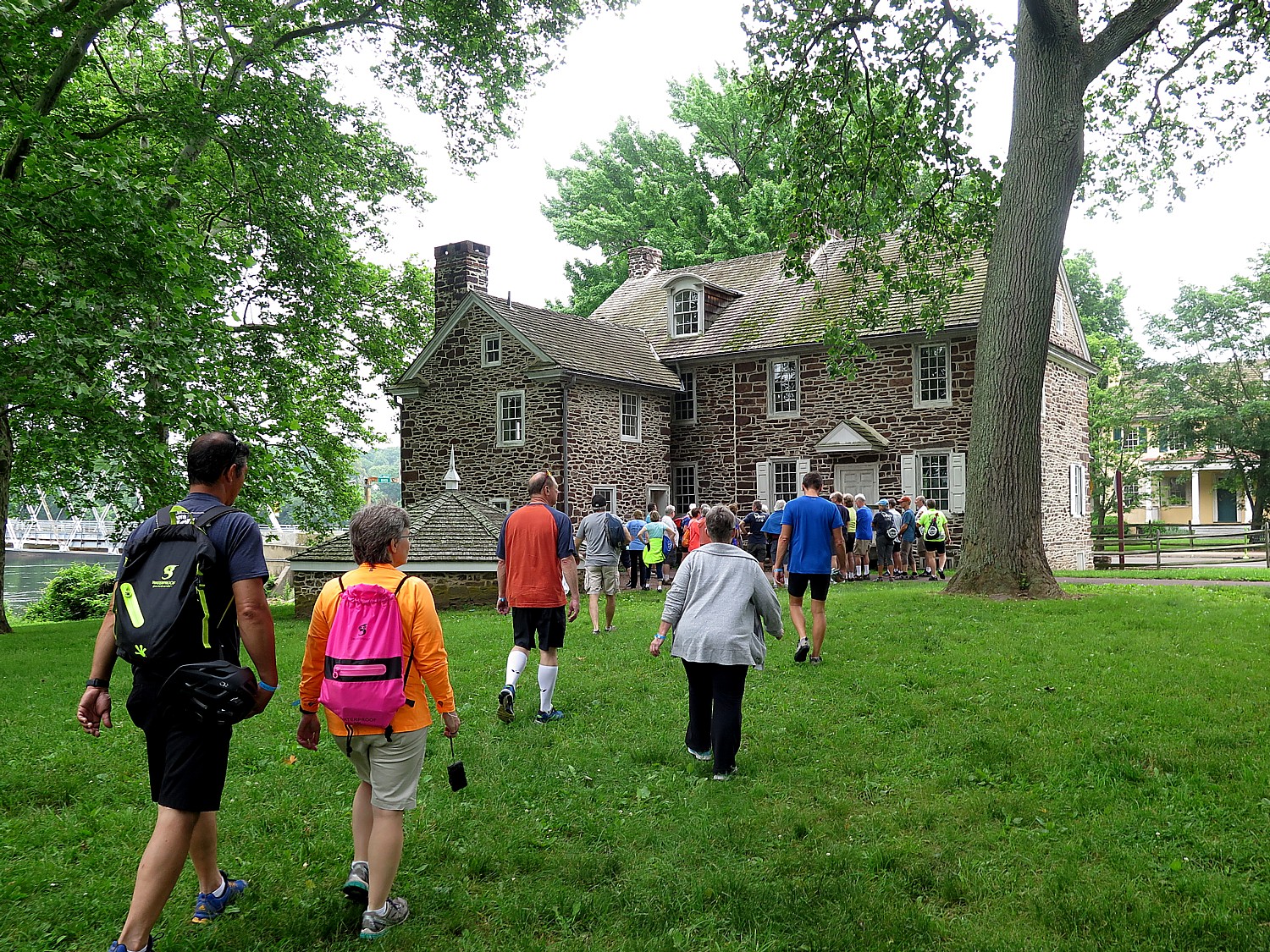
We walk into a historic village – and come to McConkey’s Ferry Inn, which was the only building here at the time of Washington’s Crossing – the other buildings were constructed 40 years or more after.
Walking through it, it is an amazing feeling to sense Washington sitting here, plotting what could have been a suicide mission, making such decisions.
The inn was built on the major thoroughfare between Philadelphia and New York City to accommodate the ferry, one of many along the river.
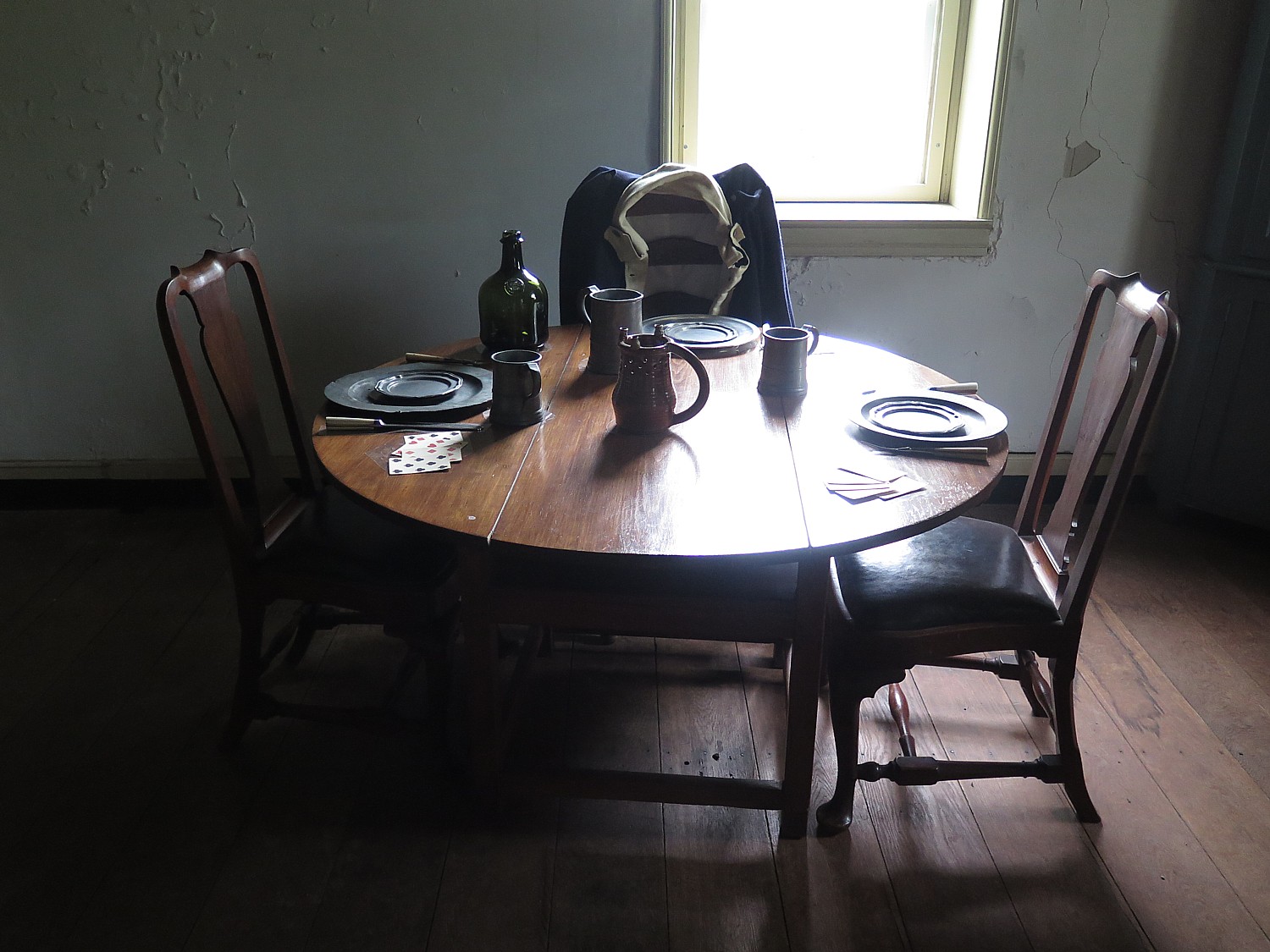
We go into the boathouse – which was built in 1977 to house re-creations of the Durham boats that Washington would have used.
These are all re-creations, and smaller (40 feet long) and lighter and more nimble than the ones Washington would have used. By the 1830s, these boats, built to carry cargo, were obsolete – indeed, even in their day, they were often used for one-way trips and discarded.
Washington’s boats were 65 feet long, weighing 7,000 pounds, 50 percent heavier that these re-creation. As it is, it takes a day to put four boats in the water for the annual Christmas re-enactment.
In Washington’s time, the boats would have been kept in the water, not a boat barn, which was built in the 1950s when they started doing the reenactments.
There were no seats in the boats – everyone stood up, but no one was as high up as Washington is depicted in the famous painting.
The painting shows 13 people – 12 in the boat and one standing up; for the reenactments, they use 11 crew, four oars each 15 feet long and 50 lbs, with two people per oar at shoulder level. One of the oars is 22 ft, weighing 100 lb,that is used like a rudder to steer the boat.
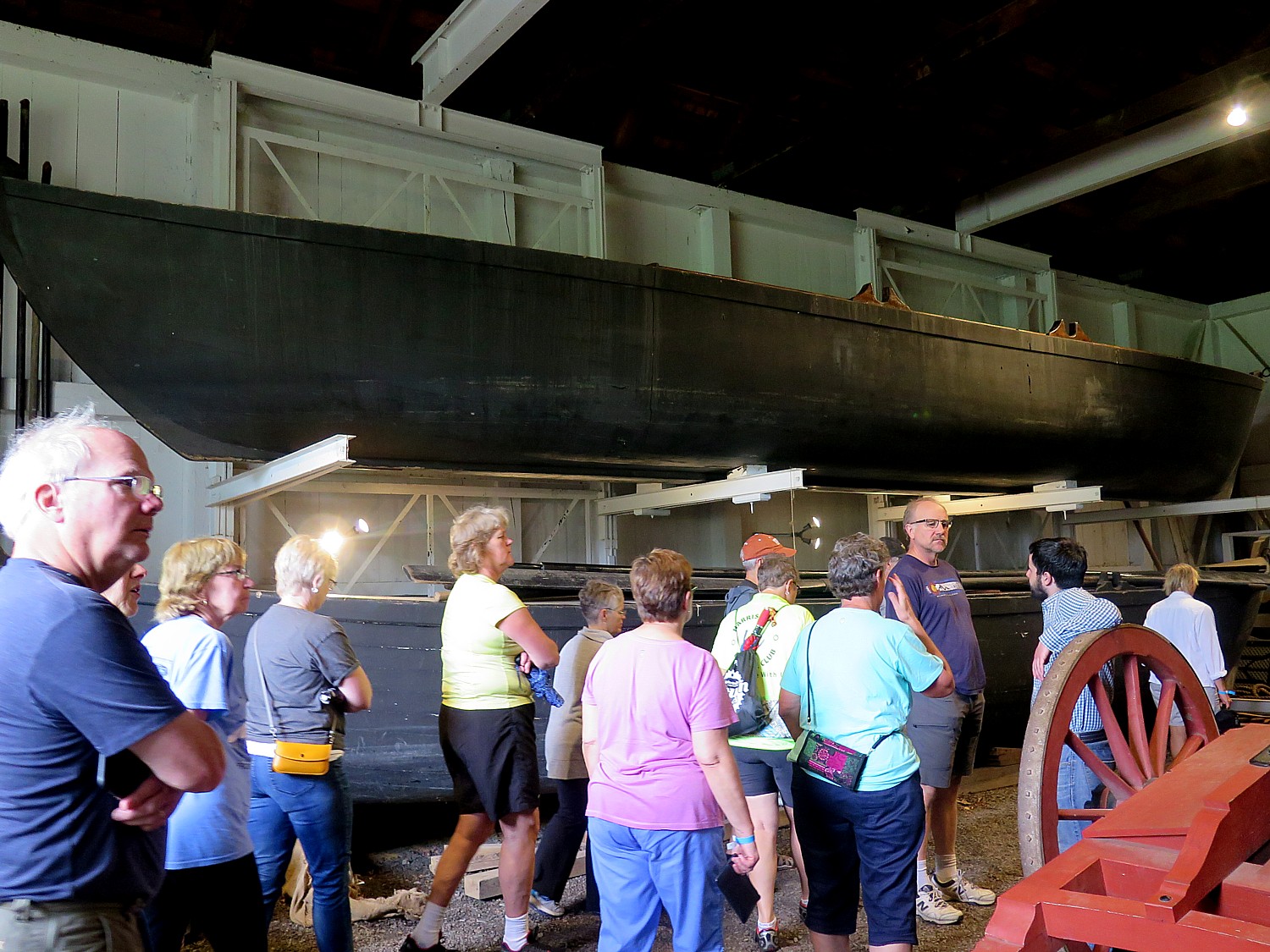
“We do it in one hour. It took 11 hours to transport Washington’s troops during the night, going back and forth.” Once, he recalled, it was snowing heavily during reenactment which was most like the actual conditions.
Each boat made five trips both ways, carrying 45 soldiers plus the boat crew (imagine what that would have been like for the boat crews). It took a half-hour or longer for each trip. One man fell off the boat, but was saved.
The river was fast, but 45 feet wider than normal, and with ice blocks as big as six feet wide, would come suddenly with speed, joggle the boat and knock it off course. It was difficult to see.
Over the course of the 11 hours, Washington’s 2,400 soldiers were shuttled across. But then, these soldiers, some of whom were dressed in rags and barely had shoes, had to wait for hours as they were pounded by a Nor’easter that set in at 11 pm, for the rest to arrive, and then march 9 miles over mud paths to fight the same Hessian troops who had beaten them five times before.
“The odds were not in their favor. It shows the fortitude of the men.”
Because surprise was his key weapon, Washington kept the mission a secret until the last minute.
“Washington didn’t tell the men the attack was underway until 1 pm. That was not enough time for the men to prepare supplies and march. So a lot of the men were late,” he tells us, standing in front of a map that illustrates the battle plan.
Washington assembled his own troops near McConkey’s Ferry in preparation for the crossing. By 6 pm, 2,400 troops had begun crossing the ice-choked river. The operation was slow and difficult due to the condition of the river. There was an abrupt change in the weather forcing the men to fight their way through sleet and a blinding snowstorm. These obstacles proved to be too much for the supporting divisions led by colonels Cadwalader and Ewing, ultimately preventing their crossing at southern points along the Delaware.
Washington had planned for a Pincer-style attack. He had them synchronize their watches. He had already started sending the men across when he learned that the other two generals were not able to send their men. He decided to continue anyway.
In this ferry building, Washington writes to Colonel Cadwalader, “’Dear Sir. Notwithstanding the discouraging accounts I have received from Colonel Reed of what might be expected from the operations below, I am determined, as the night is favorable, to cross the river and make the attack upon Trenton in the morning. If you can do nothing real, at least create as great a diversion as possible. I am, Sir, your most obedient servant.’”.
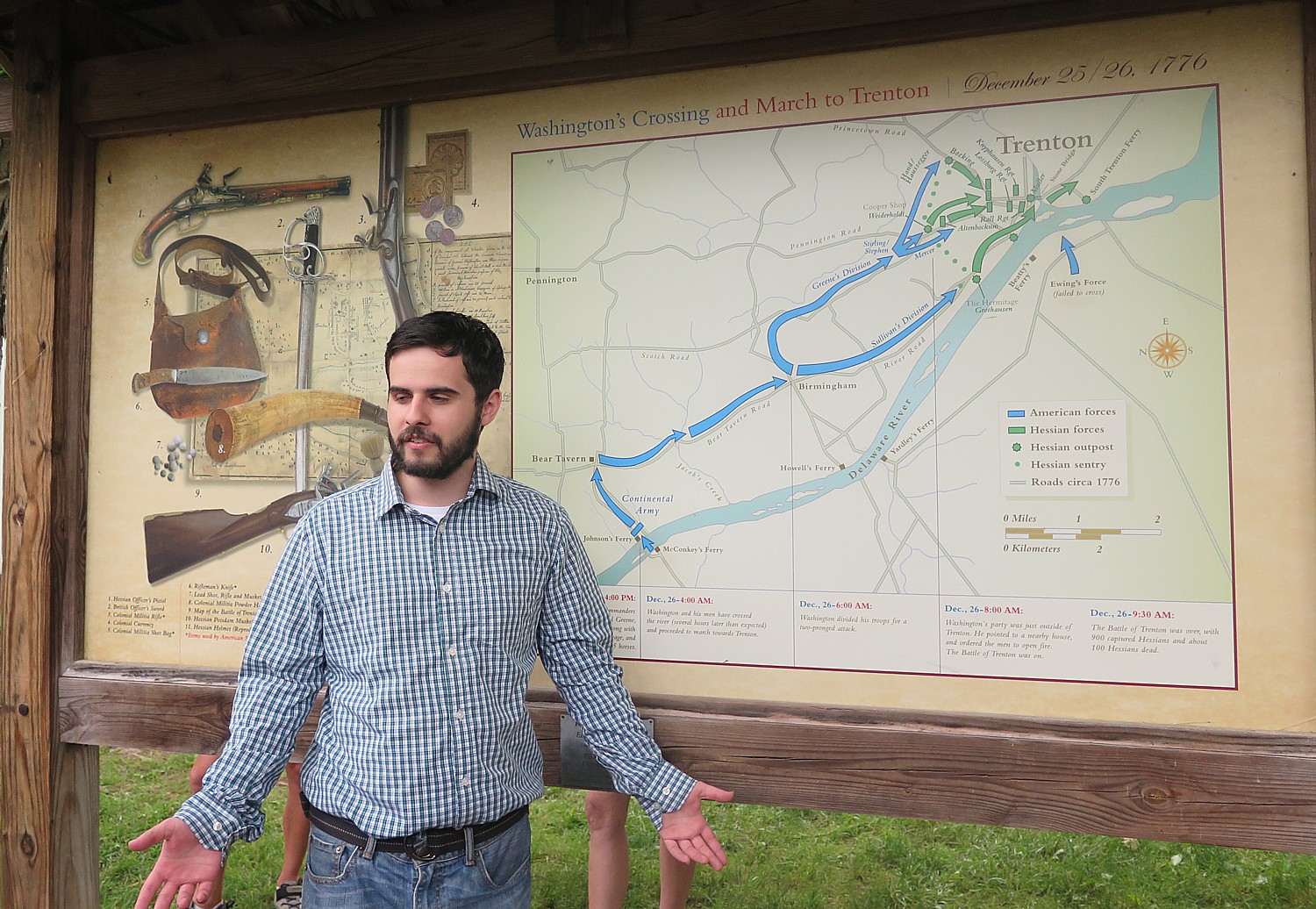
“Now the weather works to the Americans’ advantage,” our guide relates, standing in front of a battlefield map. “Hessian guards (pickets) are in houses. Washington sneaks through perimeter undetected. But one rogue group launches a raid, which undermines the crucial element of surprise. The Hessian guards run into city to warn the commander, Colonel Johann Gottlieb Riall, but Riall thinks it is just a raid. He musters half to guard two main roads, but doesn’t meet Washington head on. Washington tries to retain initiative.”
The First Battle of Trenton takes only an hour. Of the 1,500 Hessians, 100 killed or wounded. Rall is fatally wounded.
Washington informed Congress of victory but neglected to mention how many men were lost (the Hessians lost about 100).
It was a relatively small battle but the victory elevated the American cause in eye of world. Then, within 10 days, Washington chalked up victories at Trenton and Princeton.
There were still 5 more years of war, until 1781, to come, but this was the turning point in revolution.
“The 3 victories are huge for Continental Army. France and Spain began to pay attention. If Washington had lost, Continental army would have disbanded.”
The Hessian prisoners were paraded through Philadelphia to Lancaster where they worked on farms, were paid and given free room and board. A quarter of the Hessian prisoners wound up staying or returning to the area after the war (the Pennsylvania Dutch were already here.) But American prisoners were badly treated.
The single biggest fact we don’t know about Washington’s crossing of the Delaware? Who crossed.
Each December, thousands of people gather on the banks of the Delaware River to watch the reenactment of George Washington’s daring 1776 Christmas night river crossing. During the event, several hundred reenactors in Continental military dress row across the river in replica Durham boats.
This year, there are two opportunities to view the reenactment at Washington Crossing Historic Park, on December 9 (10 am to 4 pm, the crossing is at 1 pm, $8/adult, $4/child 5-11; in addition to the crossing reenactment, special colonial-era activities and demonstrations in the Historic Village will offer a full day of family fun and learning) and Christmas Day, December 25 (noon to 3 pm, crossing is at 1 pm; free. The event draws thousands of people; arrive well before 1 pm for a good place to view (see www.WashingtonCrossingPark.org).
The Historic Village
The McConkey Ferry Inn which we get to visit was the only building here at the time of Washington’s Crossing of the Delaware; the other structures came later.
The first ferry building was built in 1752, but only the basement kitchen remains. The current inn was built in several stages; the west side, the one farthest from the river, was built around 1790 and includes the original basement. The building represents a typical country inn or tavern of the Revolutionary era and suggests the variety of amenities that would have been available to the traveler at that time.
Mahlon K. Taylor House: Born in 1791, Mahlon K. Taylor became the wealthiest and most influential member of the Taylor family, a fixture of Taylorsville’s commercial success until his death in 1870.The stately home, built 1816-17, illustrates Taylor’s successful career as a merchant and entrepreneur. The house is an example of the degree to which the fashions and refinement of upper-class Philadelphians were beginning to influence rural Pennsylvania.
Taylorsville Houses: These 19th century buildings were built by different members of the Taylor family as their own residences or to rent to trades and craftsmen. Many 19th-century country villages and towns also had general stores that sold a wide array of merchandise. Mahlon Taylor opened the Taylorsville store around 1828 shortly before the Delaware Canal was constructed, and served as postmaster there for 40 years.
Hibbs House: Built in 1828, this building was one of several tenant houses the Taylor family constructed to attract artisans to Taylorsville. It served as the home and workshop of a shoemaker, then a cooper, a wheelwright, and finally a carpenter, Abdon Hibbs. A typical two-room over two-room stone structure, it housed a worker, his family, and his apprentice, as well as his shop.
Frye House and Blacksmith Shop: Bernard Taylor built the Frye House in 1828 as a tenant property. It housed Taylorsville’s blacksmith and his family, as well as an apprentice. The blacksmith was indispensable, fashioned iron tools and implements essential to work and to family life in the preindustrial era. The current shop was built in 1990. Living-history demonstrations are conducted during special events.
Revolutionary War Memorial Cemetery
Our afternoon tour begins with a visit to a memorial cemetery where an unknown number of Continental soldiers who died during the December 1776 encampment in Bucks County are buried.

Although no Americans were killed during the Crossing and the First Battle of Trenton, these soldiers would have died due to exposure, disease or previous injuries. James Moore, a 24-year-old artillery captain from Alexander Hamilton’s New York company, is the only veteran buried in this plot whose identity is known.
Washington Crossing Historic Park, 1112 River Road, Washington Crossing, PA 18977, 215-493-4076, www.WashingtonCrossingPark.org.
Thompson-Neely House & Farmstead
I love visiting the Thompson-Neely House, on Bowman’s Hill, just across a road from where we camp at the Washington Crossing State Park, and on the other side of the canal.
The house is presently interpreted as it would have been when it served as a temporary regimental army hospital during Washington’s winter campaign of 1776/1777. Ill and injured soldiers were brought to this home of the Thompson and Neely families for medical treatment and recovery. A young officer from Virginia named James Monroe, who was seriously injured during the First Battle of Trenton, convalesced here. In 1817, he became the fifth president of the United States. William Washington, a distant cousin of the commander-in-chief, was also wounded and he too recovered. This is where Captain James Moore of the New York Artillery died of camp fever on Christmas day and is buried on the property (in what is now the Soldiers’ Graves area).
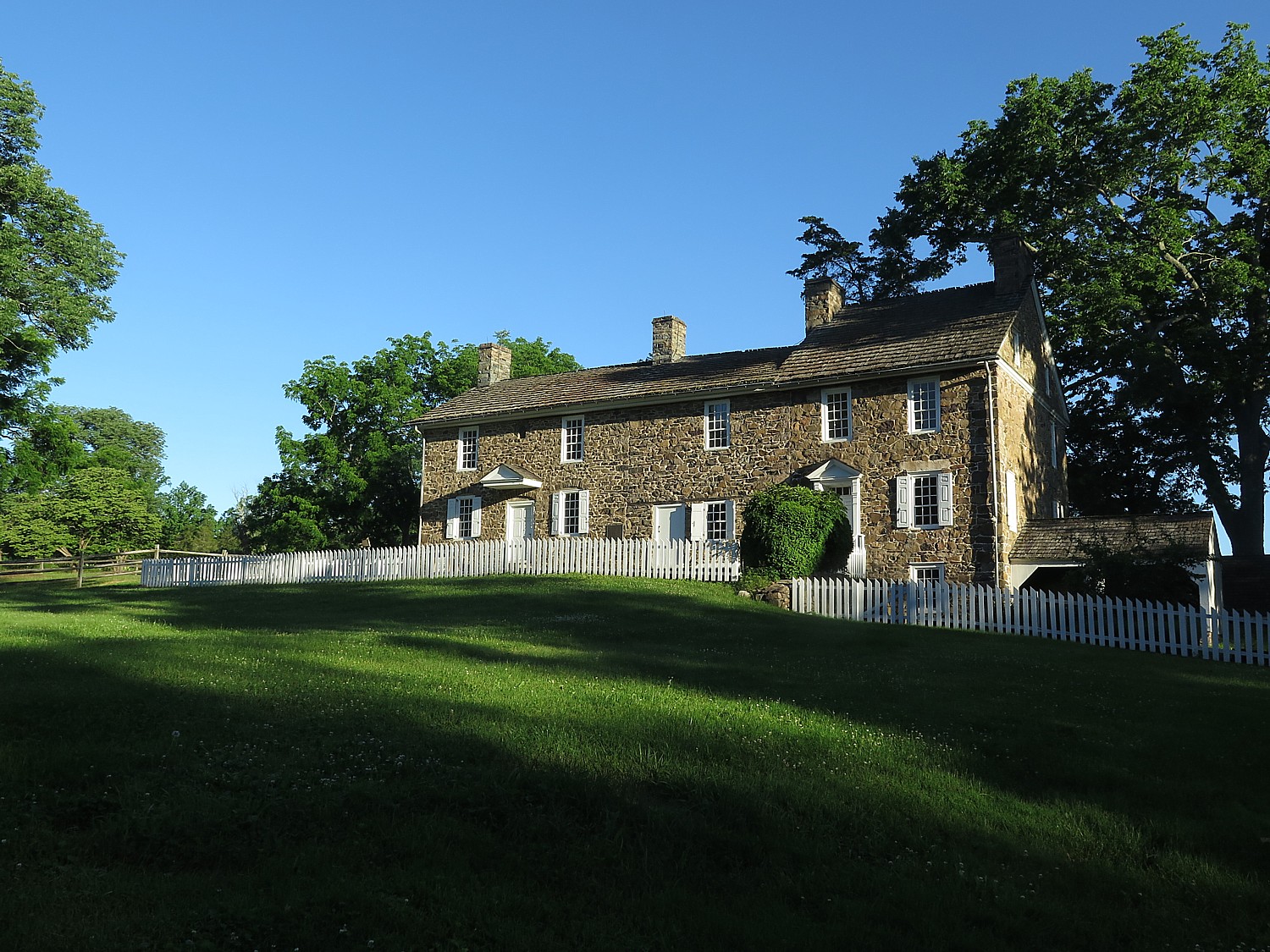
The Thompson-Neely House, which is listed on the National Register of Historic Places, is an example of vernacular 18th-century architecture. Originally a low, one-room dwelling, it was expanded over time to a two-story, multi-roomed farmhouse reflecting the growth of colonial Pennsylvania’s agricultural economy and the prosperity of the Thompson family, who milled grain into flour for export.
Several hundred years ago, the area occupied by the Thompson-Neely House and Farmstead and the nearby mill were inhabited by natives of the Lenni Lenape village of Winnehawcnunick. Around 1684, a runaway indentured servant, John Pidcock, fled his master and took possession of the property, establishing a fur trading station there around 1701.
The next owner of the property, Quaker miller John Simpson, constructed the original central section of this house about 1740, as well as a gristmill along Pidcock Creek. At the time of his death in 1747, Simpson was a prosperous farmer with an interest in a sawmill besides his other holdings. His widow, Hannah, married Scots-Irish miller Robert Thompson in 1748, whose farming and milling businesses on the property made him one of the wealthiest men in Solebury Township by 1761.
In 1757, owner Robert Thompson built a two-story addition on the west end (away from the river) of the house.
Nine years later, Thompson’s daughter, Elizabeth, married her father’s apprentice William Neely, an Irish immigrant, and Thompson added a second story above the old first section.
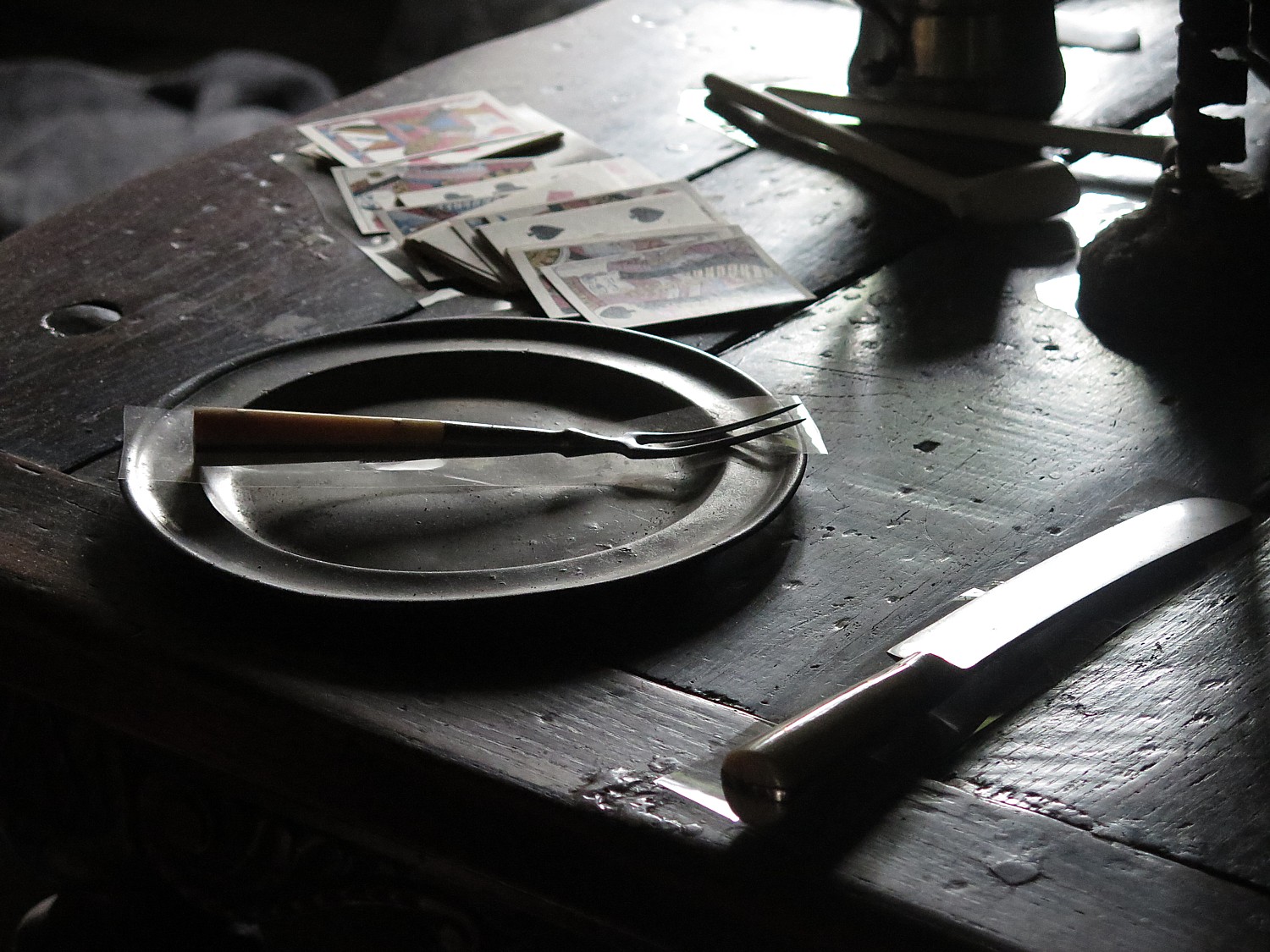
Neely, who was in the militia in 1775 with Washington’s troops. Neely brought the army here to camp out. There would have been some 500 Continental army troops camped here (7400 in the area), among them James Monroe (the future president), and William Washington, a cousin to General Washington.
Robert Thompson enlarged the house once again by constructing the two-story east wing in 1788 to accommodate the Neely’s growing family. Taller ceilings gave this newest portion a higher roofline than the existing structure.
When he died in 1804, Robert Thompson left his large estate to his grandson, Robert Thompson Neely, including the main farmhouse with outbuildings, two mills, a cooper’s shop, and a distillery. Although Robert Thompson Neely continued to expand his family business and real estate holdings, he died in debt in 1848. Succeeding generations of the Neely family continued to own the farmhouse. When the Commonwealth of Pennsylvania acquired it in 1926, the building had been little changed since the early 19th -century.
Once the centerpiece of a working farm and milling complex, the Thompson-Neely House is surrounded by the numerous outbuildings needed for farmlife in the 18th-century, such as the restored smokehouse, chicken coop and privy. Washington Crossing Historic Park’s flock of sheep may be visited at the restored barn.
Thompson-Neely Grist Mill
The Thompson-Neely grist mill, built in 1875, is actually the third grist mill to be built on the property.
The grist mill figured into the prosperity of the families who lived here, first Englishman John Simpson who acquired the property around 1740 and built the first grist and saw mill. After he died, in 1747, the mill passed to his journeyman, Robert Thompson, who married Simpson’s widow, Hannah. The couple farmed and ran the mill at a time when Philadelphia was the largest city in British North America and had a thriving flour market, exporting five million pounds in 1771. By 1782, Thompson had become one of the wealthier men in Solebury Township.
William Neely, Thompson’s apprentice, married Thompson’s daughter in 1766, and ran the mill for more than 40 years before his death in 1804. Thompson’s daughter and grandson, Robert T. Neely, inherited the mill.
The Thompsons and the Neelys built up an estate that included the grist mill, a saw mill, cooper’s shop, distillery, store, sawyer’s house, miller’s house, and assorted barns and outbuildings on 500 acres of land.
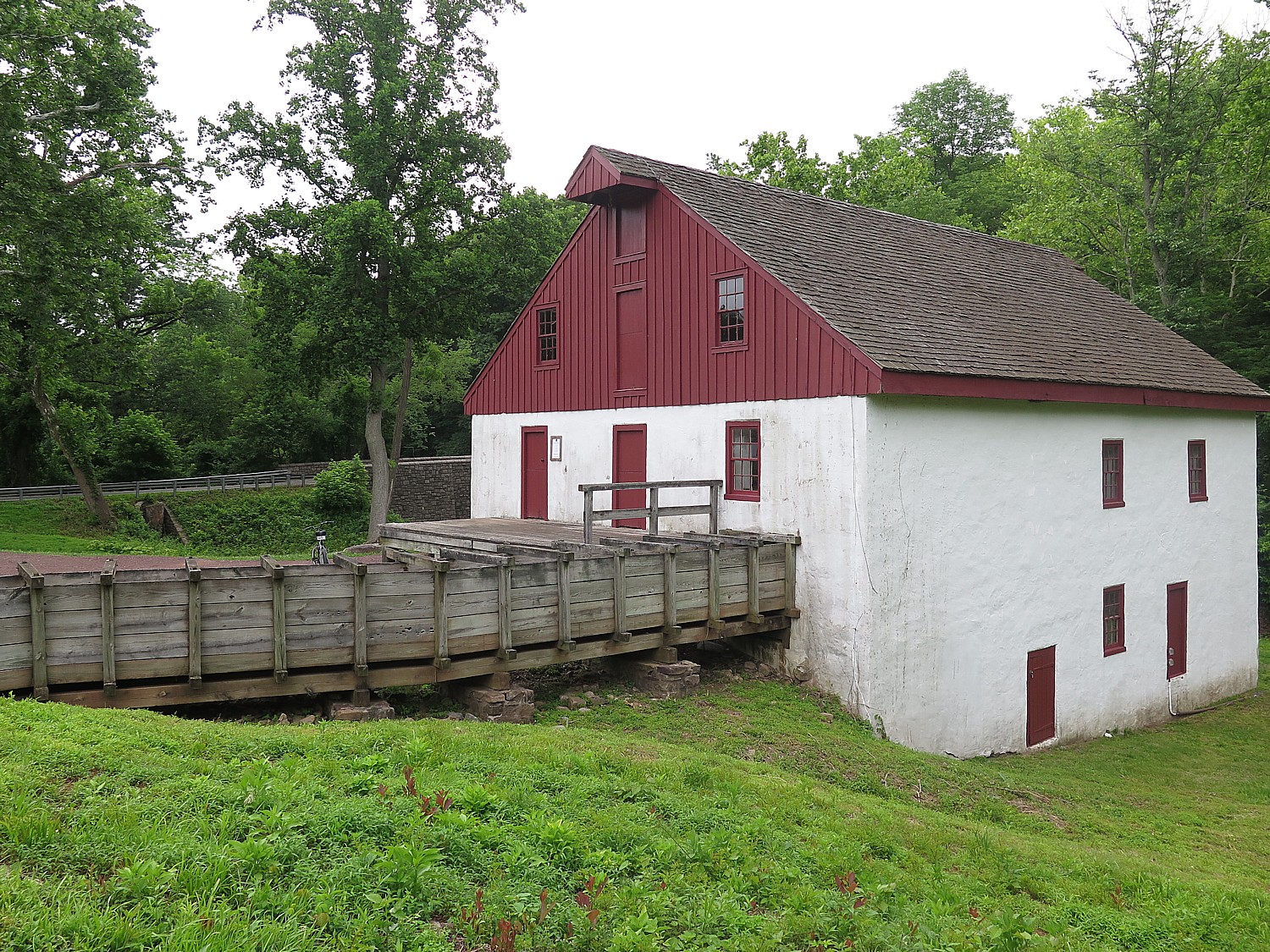
The Second Mill, 1829-1873: The Pennsylvania Canal Commission built the Delaware Canal through Neely’s property, along the original creek bed that powered the mill’s water wheel which put Neely’s mill out of business. He received $8,000 from the state for damages and built a new mill further upstream on the site of the present grist mill.
The Third Mill, 1875-1910: Robert’s Neely’s son John owned the mill when it caught fire in August 1873. The mill was rebuilt in the same place and reopened in 1875 and operated until 1910, after being purchased by the State of Pennsylvania.
The mill was closed for 50 years, until the state renewed interest in it as a historical site.
Restoration: During the 1970s, the Pennsylvania Historical and Museum Commission carried out archaeological research and restoration of the site. A new water wheel was installed in its original location, and the mill was restored to a state resembling that of a grist mill of the late 1820s. But the mill was again shuttered 20 years later.
Restoration work began in late 2016. And after two decades shuttered to the public, the Thompson-Neely Grist Mill’s doors reopened on March 17, 2018, just a couple of months before we Sojourners arrive. In-depth programming including live demonstrations of the milling process, field trips for area students and a special program for children during the park’s annual Sheep-to-Shawl Day are planned.
Bowman’s Hill Tower
Bowman’s Hill Tower, we discover on the tour the Sojourn has arranged for us, is just about the only place in Bucks County to get an above-the-trees, bird’s-eye view of the surrounding countryside and Delaware River. The Tower, which was built between 1929-31 as a Depression-era project, rises 125 feet high atop Bowman’s Hill; on a clear day, you can see 14 miles away.
We hike up the 124 steps (an elevator installed during the 1980s restoration can take you up three-quarters of the way, to the last 23 narrow steps).
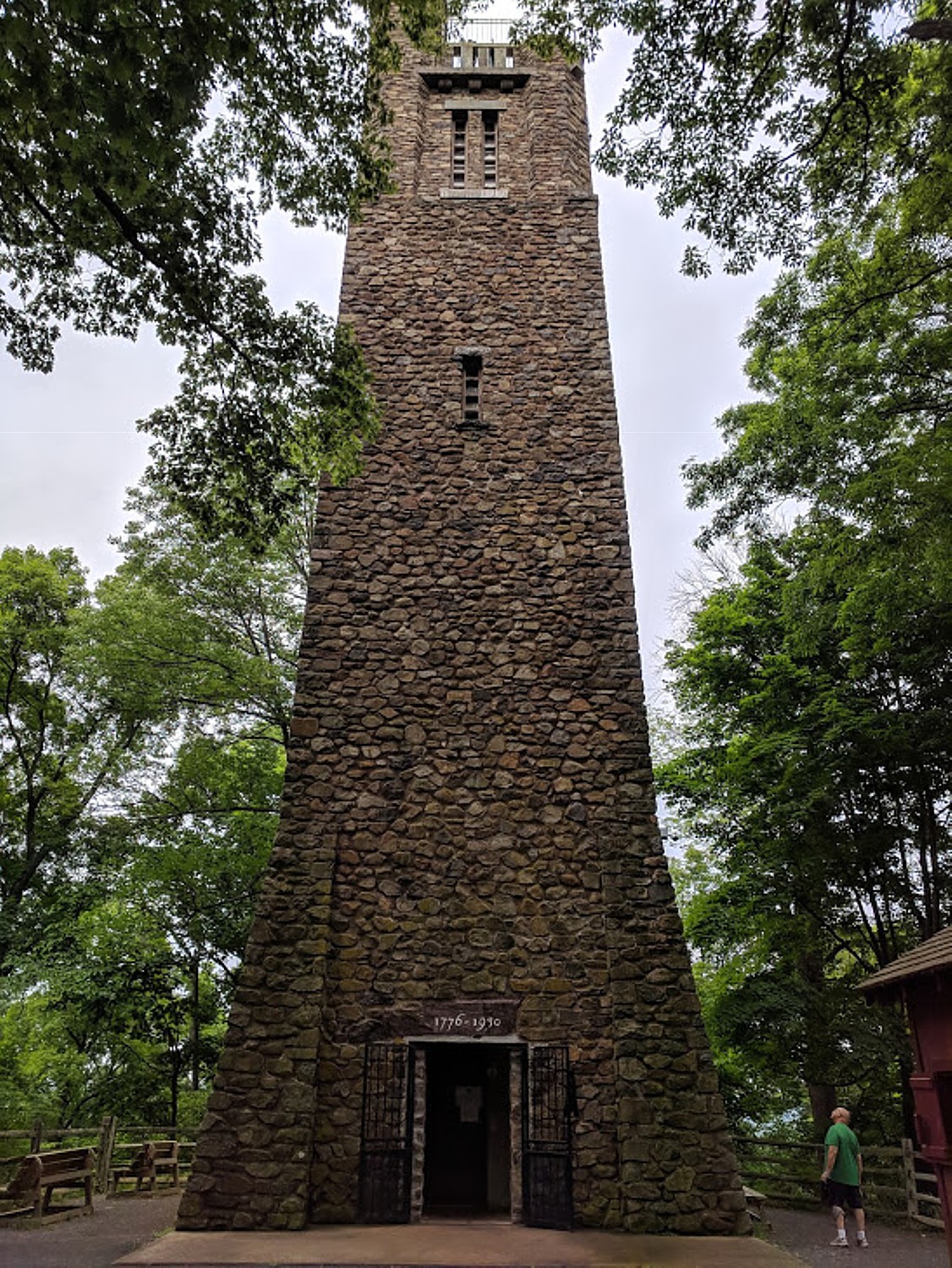
Soon after the tower’s construction, workers planted 28,300 seedlings in the area to reforest the hill like people thought it would have been in Washington’s time. Some of those seedlings have become today’s towering trees on Bowman’s Hill.
Walking up from the Thompson-Neely House, passed the Bowman’s Hill Wildflower Preserve (so many wonderful, themed trails to explore! Next time!), proves to be quite a hike, because it is about 1.5 miles up on a winding road before you even get to the staircase.
During the regular season, a 60-minute walking tour of the Thompson-Neely House and Farmstead and the grist mill is offered daily from 10 am to 4 pm; tickets are $7 or $15 for all park sites (the Historic Village, Bowman’s Hill Tower and the Thompson-Neely House and Mill).
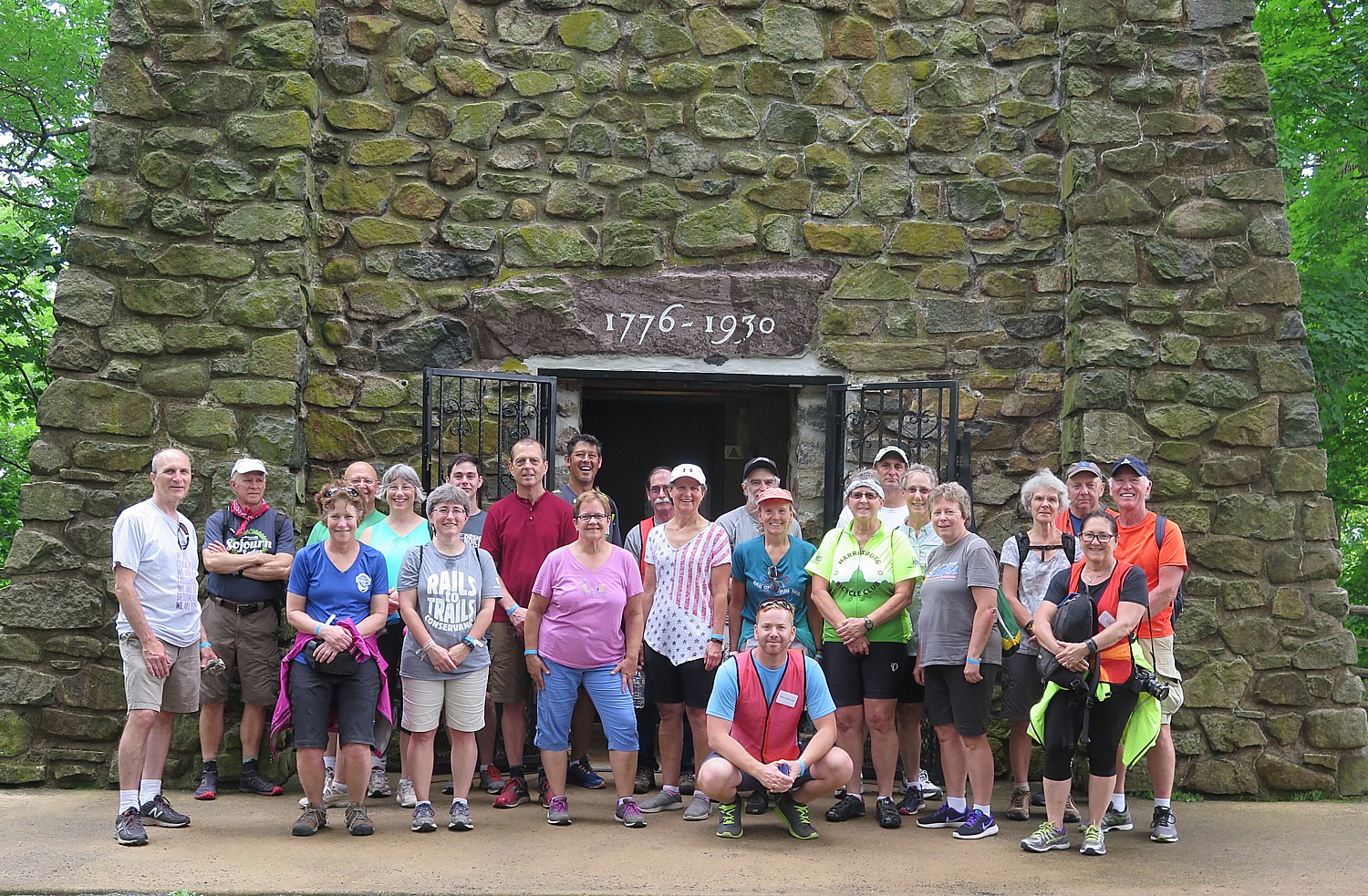
Washington Crossing Historic Park, 1112 River Road, Washington Crossing, PA 18977, 215-493-4076, www.WashingtonCrossingPark.org.
The Delaware & Lehigh National Heritage Corridor, 2750 Hugh Moore Park Road, Easton, PA 18042, http://delawareandlehigh.org/ (It also has a description of the bike trail.)
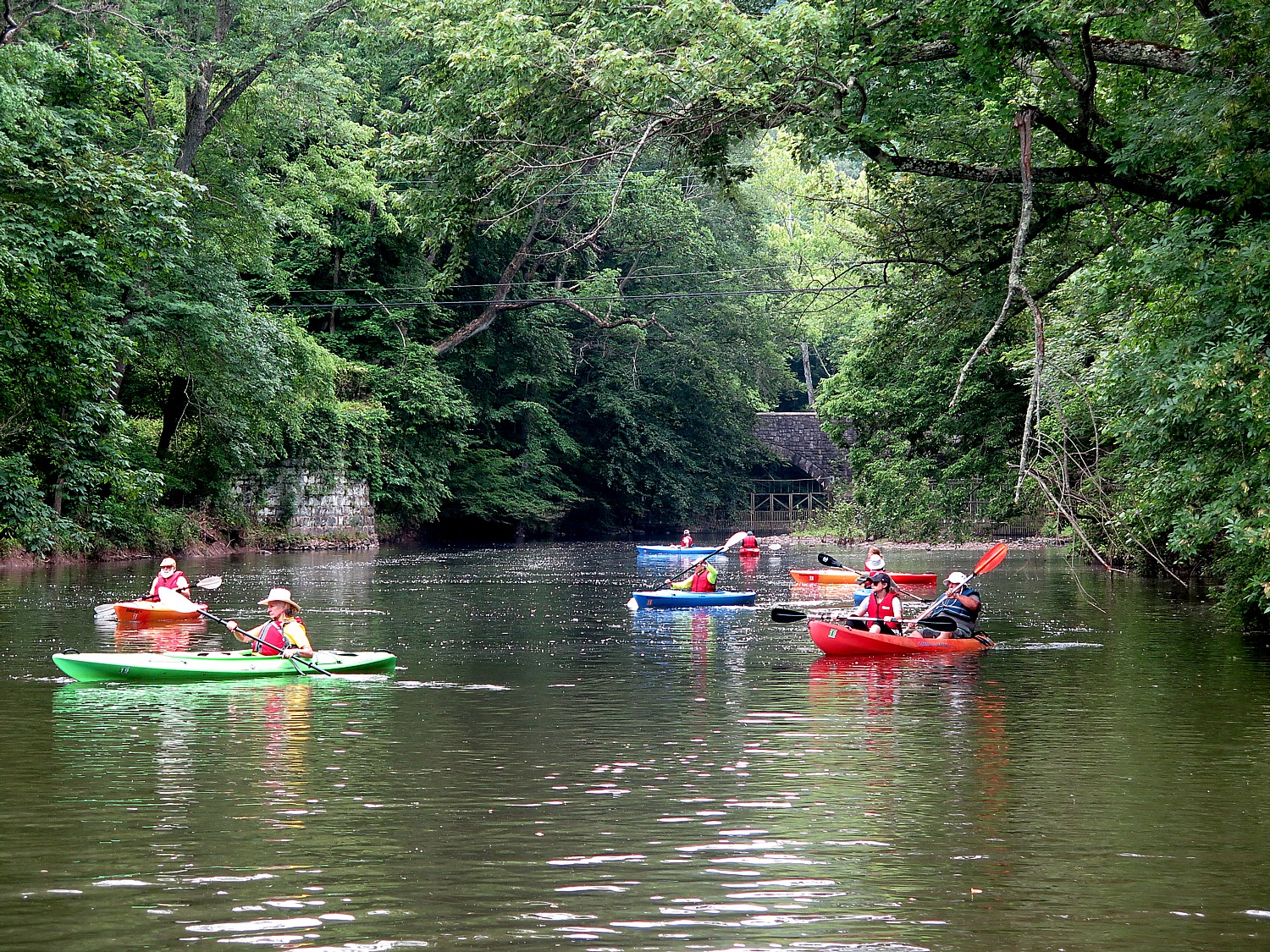
Rails-to-Trails Conservancy is a nonprofit organization dedicated to creating a nationwide network of trails from former rail lines and connecting corridors; it advocates for its 160,000 members and supporters, 31,000 miles of rail-trails and multi-use trails, and more than 8,000 miles of potential trails waiting to be built, with a goal of creating more walkable, bikeable communities in America. RTC offers TrailLink, a free service that lets you access RTC’s 30,000 miles of trail maps and itineraries and downloadable mobile app.
Rails-to-Trails Conservancy, 2121 Ward Court, NW, Washington, DC 20037, 866-202-9788, railstotrails.org, TrailLink.com.
See also:
Biking the Delaware & Lehigh Trail, Showcased on Rails-to-Trails Conservancy’s Last Sojourn BikeTour
_____________________________
© 2018 Travel Features Syndicate, a division of Workstyles, Inc. All rights reserved. Visit goingplacesfarandnear.com, www.huffingtonpost.com/author/karen-rubin , and travelwritersmagazine.com/TravelFeaturesSyndicate/. Blogging at goingplacesnearandfar.wordpress.com and moralcompasstravel.info. Send comments or questions to FamTravLtr@aol.com. Tweet @TravelFeatures. ‘Like’ us at facebook.com/NewsPhotoFeatures
